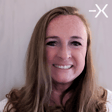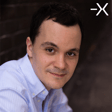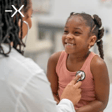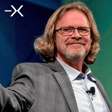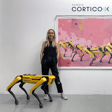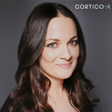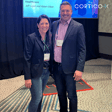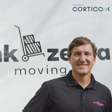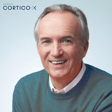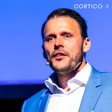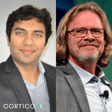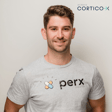Cordico X's Philosophy on Digital Acceleration
00:00:00
Speaker
Cordico X is an experience-led transformation business that partners with clients and technology companies to drive digital acceleration. We are experience activists, passionate about elevating everyday human experiences through the belief that what's best for people is what's best for an organization. Reach out to us for a chat. A link is in the show notes.
Introducing 'Speaking from Experience' Series
00:00:34
Speaker
Hello and welcome to Speaking from Experience from CorticoX, where we speak to the people with experience of experience. I'm Will Kingston.
Challenges in Cancer Patient Experience
00:00:44
Speaker
About 40% of Americans will get cancer in their lifetime. It's a sobering statistic. We all know someone who has lost their life to this awful disease.
00:00:56
Speaker
Given its prevalence and its devastating impact, you'd think that healthcare systems would do everything they possibly could to ease the burden on patients and their families and friends. Unfortunately, that's not always the case.
User-Centered Design for Cancer Care
00:01:10
Speaker
In fact, navigating cancer centres can be a nightmare for people who are already at a low ebb.
00:01:17
Speaker
My guest today, Brian Graziano, did not think that was good enough. Brian is the Director of User Experience for Revenue Cycle at Providence Healthcare, a not-for-profit US healthcare system. Brian's team have employed user-centered design to transform the experience for cancer patients at centers, and the results have been remarkable. Brian, welcome to Speaking from Experience.
00:01:41
Speaker
Thanks, Will. It's great to be here. It's a pleasure to have you on. We had your colleague, Lynn McMaster, on last week. So this is the second part in a series about how Providence is absolutely crushing it when it comes to customer experience.
00:01:55
Speaker
That's exciting. you've Yeah, you've had some amazing guests, so hopefully I measure up. Got absolutely no doubt. And you've got a ah wonderful story to tell. Why don't we start there? I really want to hear from GoToWoe what you've done and then then maybe pick up some lessons.
Logistical Improvements in Healthcare
00:02:11
Speaker
But as with every good user experience expert, let's start with the problem. What was the problem that your team was trying to solve for at Providence?
00:02:20
Speaker
So the problem really started, and I should back up a little bit about my role. So I work in the revenue cycle. when A lot of times when you think about user experience in healthcare, care you think about you know the imaging interfaces or the clinical settings or things of that nature. But really, like a lot of your experience as a patient, if you think about you know your own experience with those of your loved ones, it's the scheduling, it's the checking in, it's the discharge, it's understanding your bill, it's the logistics, it's knowing how to pay and get coverage and things like that.
00:02:49
Speaker
A stat somewhere I read was two-thirds the experience was was those things. And so if you think about our mission to get to health for a better world, this is a key way to do it. If patients can get to their care without confusion, if they can you know know how to pay their bill, if they can know how to connect coverage, you know it'll lead to better health outcomes. So that's a little bit about my role in the revenue cycle. you know Going back to the Cancer Center, the challenge we received was really about how to create time for cancer patients.
Efficient Healthcare Processes for Cancer Patients
00:03:21
Speaker
So a lot of the things we do when you're going through a ah cancer treatment, I mean your intro was spot on, it can be one of the scariest experiences that one would ever walk into.
00:03:34
Speaker
you know you receive this crushing diagnosis And then all of a sudden you're in need of all different kinds of support. There's the physical support. There's logistical support of getting to your care. There's the financial support. And what really comes into focus at that point is it's not sure your land or your cars. It's like all of a sudden time with your loved ones, the time you have to to take care of things that you need to take care of, the time you need to take care of yourself.
00:04:00
Speaker
So I was asked to be part of a team from our ah chief medical officer of our Puget Sound regions who is Dr. Sarah Jo Grethline and she really put this challenge to us of how do we create time for patients? There's a lot of need there and unfortunately, you know, a lot of the systems that we use to care for patients are not designed with that need in mind, right? How do we turn that on its
Design Thinking in Healthcare
00:04:23
Speaker
So that was the initial challenge from the get go. We had to take that sort of big challenge and all the hunches of what the problem might be and just really quickly scope that down right into something that we could attack. Right. Or really do from an experience perspective. it's It's a wonderful, simple brief, but I imagine also quite daunting because the question of, well, how do you create time for patients?
00:04:50
Speaker
can lead you off in infinite possibilities. So the question is, how do you limit down some of the possibilities that you choose to focus on? Yeah, exactly. I mean, that was that was the first challenge, is how do we take that big challenge and scope it down, right? So I was asked to lead a design thinking process. So for those, I think a lot of people know what that is by now, but for those kind of new to that party, it's a process of exploring all the options available, deeply understanding the user needs,
00:05:19
Speaker
and going through a process of trying things and testing and and getting to a solution. So going through that process, you know, we spent time with patients. We spent time with our employees, which we call caregivers. We spent time with Dr. Grethline's clinical colleagues, you know, looking all and all up and down the org.
Identifying Opportunities for User Experience Enhancement
00:05:36
Speaker
We were working with the main cancer care center in Dr. Grethline's region is called SCI or Swedish Cancer Institute.
00:05:44
Speaker
So in the Seattle area, you know it's one of the main places that you go for cancer care. Something like one in four patients in that region goes to SCI for treatment. They've long been known for you know specialty treatments. And cancer treatment happens across five hospitals, happens across several locations. And and the one particular location we were you know really asked to focus on, it's a multi-level cancer center. They treat all kinds of cancer, like first to human treatments, really advanced stuff. So we got immersed in that world.
00:06:12
Speaker
It included interviews like we did remote interviews. you know At one point, we we set up a table and and talked to patients as they were walking by um just to get that sort of firsthand perspective. And through that process, we aligned on five different opportunity areas or visions that the group we were working with reasonably believed you know we could potentially do.
00:06:35
Speaker
Before you get to those five, I've got a question on that process of gathering insights. Because I imagine, whilst that approach seems entirely logical, it may sometimes not be easy to speak to patients who themselves, as we've already said, are in a difficult position, who may be in a difficult emotional state. How do you go about having those sorts of empathetic customer interviews, or I should say patient interviews, with people who may be in a very emotionally fragile state?
00:07:03
Speaker
It's a good question. the The people that are reporting to me, you know we we all have experience in conducting ethnographic research. I was a research and strategy director for a consultancy in Chicago for a number of years. So you sort of gain that way to create empathy with an individual to make it safe for them to welcome you into their space. We also worked through the caregivers who had relationships with people already. And when you're in that situation, we found that patients and caregivers were happy to talk about their experiences. The one thing that impressed me about caregivers is they keep things very light you know and in in the face of
00:07:44
Speaker
all that they're managing and so they were happy to welcome us into their environment and give us a day in life and give us the information we needed to assemble a recommendation. To pick up the story you have five opportunity areas that you identified. What next? We had the five opportunity areas and it's what to do next.
Streamlining Cancer Patient Check-In
00:08:05
Speaker
We had a lot of conversations around them. We did evaluative sessions. We had caregivers look at them. We had the clinical teams review them. We reviewed them with revenue cycle stakeholders.
00:08:17
Speaker
We got to an idea of prioritization, and you take into account, what do we feel like we can launch and test in the near term? What do we see what are we feel like would meet the best meet the business need? What do we feel like answers the you know the user needs that we identified?
00:08:33
Speaker
And you know it really like we had ideas, like one of them was um sort of along the lines of establishing an Apple Genius type of role you know in the cancer center to help people navigate. Or maybe there's an additional digital experience right at the counter that helps bridge languages and and ah you know assists it's like a digital assistant for the caregiver at the front desk. What we ultimately aligned on was, hey, we really need to look at this point of check-in, which is really
Improving Coordination for Cancer Appointments
00:09:02
Speaker
repetitive. So imagine you're a cancer patient, the typical workflow or the typical flow for a cancer patient is, or atypical flow, there's lots of versions of this, lots of different types of cancer, but you would arrive at the treatment center, or sorry, you'd arrive at SCI, you would visit the lab
00:09:21
Speaker
You'd get ah your blood drawn or your reading. Then you'd go visit your physician on a different floor in a different office and get an assessment for how the cancer was doing, advise on next steps, see if there's any changes to the treatment plan. Then you might have a third appointment. It's all the same day.
00:09:37
Speaker
Well, so like you'd have a third appointment where you go to what's called the treatment center where you might receive an infusion or chemotherapy or you know some sort of treatment like that. So what we found in that experience was patients were becoming frustrated. They were getting lost along the way and not completing the whole flow.
00:09:56
Speaker
We did a surveys on a kind of a broader scale and found that only just over half of patients would recommend that experience to other cancer patients, ah just the on the logistics part of it alone. And we found that there'd be just this untapped potential for system improvement. There's a lot of types of treatment within a system in Providence, where like Providence where patients go through a repeat treatment. So there was a notion that if we could solve this for cancer patients, we could bring a lot of good there in that category, but maybe you know look at other types of treatment as well. So I'm clear in my head, patients would have three to four treatments in the same building on the same day, but they may be
00:10:36
Speaker
going to each one and giving their name again, giving their specific details again, a lot of duplicative effort as they go through those, those what I imagine could be quite emotionally exhausting series of consultations.
00:10:51
Speaker
Exactly. it's it's So every time you check in, you can imagine every office looks like ah it's like a separate doctor appointment. So when you and I go to the doctor, you give your name, your date of birth, your your home address, maybe another identifier, and you don't really think too much about it. But multiply that. If you're a cancer patient, you are coming several times a day all to like three or four different offices a day. You might be doing that several times a week. And it starts to degrade the experience over time. and it's I mean, we're talking about like minutes here, but like if you add that up over time, it's a lot and it can be frustrating. It can feel impersonal. It could lead to like an overly kind of functional exchange when humanity is really important in that experience. and For a cancer patient, particularly say a cancer patient where it may be incredibly serious, every minute is incredibly important. ah so I imagine that this was a really powerful opportunity area to rally around.
00:11:50
Speaker
Let's go to then, well, how did you try and solve for it, the co-design process? What did that look like?
Innovative Low-Tech Solutions in Healthcare
00:11:55
Speaker
Well, when we got to that... that narrowing. When we started to re-scope around this idea at the time, we called it ticket to ride or quick scan check-in. We looked at how can we streamline that point where you're asked the repetitive questions and make that easier. We first did a team reset. We had to look at, we're in the cancer center. like this This happens in a lot of places, but we wanted to identify a team in a particular you know set of clinics where you know we felt like we could
00:12:25
Speaker
actually try something and launch something. And at that point, we kind of narrowed the the caregiver team to a smaller set. I call them the champions. And so we started to work more directly with them. And through this process, Will, like we were doing, I mean, we use a tool called service design. It's a particular discipline that focuses on process and mapping, right? And service maps can happen at different levels. They can happen, you know, you can use a map to create the current state. You could you know, map a future state. And I think at this point, you know, we had mapped a current state of cancer treatment. We've mapped, you know, a 50,000 foot view of it. We created yet another map that was the actual experience we wanted to launch at. it was It was the breast treatment clinic where we were focusing and how a patient would get from one floor to the next. and
00:13:13
Speaker
how data would move around and how, what caregivers would do. It was essentially, you know, how do we take this, what it's, what's actually, you know, what's currently existing as three separate processes and make them work like a system and be able to, you know, make it clear to a lot of people. So that was the first step is, you know, getting clarity on what it was we wanted to change, I guess, like what, what, what was it, what the new experience was that we were looking for.
00:13:38
Speaker
I'm interested in how you pulled the caregivers into that process. So the world of user design and journey maps and personas is normal for strategy professionals, but it's a world away from what a caregiver does in their day to day job. How did they feel about being involved in this process?
00:13:56
Speaker
That's a good question. and And that's part of why we narrowed because like if you, um I mean, one of the insights we had along the way, Will, was that the process has to work immediately for caregivers. they're They're just very busy. Their focus is on the patients, right? So in any interaction we had with the caregivers, we tried to make that super high value and direct for them and make sure they know the value of why we were asking for their time and what benefit they saw from it. I mean, that that was sort of a centerpiece of our entire approach. And, you know, I will say like those processes are more familiar to strategists, but we we found actually like a lot of people in healthcare have been through process mapping. They've been been through some sort of some form of process mapping or even design thinking. So it was um it wasn't as unintuitive as I expected. They were happy to share at times they'd done this before. and we didn't So with that in mind, we didn't focus a lot on education or trying to you know bring them into a ah new way of thinking you know and parting upon them the wisdom of design thinking. We more just kind of got down to work, and and that was very much appreciated. So as you go down to get down to work, what happens next?
00:15:07
Speaker
Well, once we established what the experience was, we wanted we went on what I called a roadshow. So that involved creating a very succinct set of slides that I could share to a number of different stakeholders, because what became apparent pretty quickly was, you know what we ultimately wanted to do could potentially be a very kind of time-consuming, expensive, you know technical implementation. ah You can picture it like an app that helps you check in and things like that's kind of where we were at. And so I ah took a page out of like Airbnb's playbook. yeah You might've read that article from Fast Company a bunch of years ago. They hired Pixar you know to indicate the experience of the future and like
00:15:51
Speaker
Pixar was busy that week, but I worked with an individual individual in Great Bourbon out of Chicago, and we created like a three-frame visualization of the experience. If you can't draw a picture of it, you're not clear enough on it, right? So we created this three-frame experience, and that sort of that was the centerpiece of what we showed, and yeah we took that around to IT. We took it to the caregivers. We showed it to patients. We we worked with our our business development group and maybe some you emerging technologies from our partners in Providence that we could use to to make this come about. you know the the big The centerpiece of that was ah a workshop that we led at Swedish Cancer Institute with really all those players to look at the service map and have them all sort of leave input on it and and beat it up and tell us how it could be better, or what we weren't thinking of.
00:16:41
Speaker
That process took a while, right? Because like we had to figure out, I mean, this this is a this is a bottom-up innovation, right? It's not on any sort of executive top-down roadmap yet. So you know we had to figure it out, what what what we could do, how long it would take. And to keep scoping down, like it's kind of a theme of this, you know how do you do big innovation in a complex environment. like We kept scoping down to something we knew we could launch. and That's how we ultimately arrived at the pretty low-tech solution that we got to. It it actually came about through some on-site prototyping that was happening between the service designer on my team and the lead patient access person and and a brand designer you know working with cards and barcodes and things and figuring out what our EMR platform could could ingest and what it couldn't. and and That's sort of how we arrived at. like
00:17:32
Speaker
Okay, maybe down the road we can do a ah longer term digital, and all digital implementation. But for now, there's probably a solution we can launch that will deliver value. It'll give us a lot of data and you know it'll kind of be the proof case that, hey, there's value here. The patients will use this, caregivers will use it. It's creating value and we can learn from that. So when we go to that bigger digital implementation, we'd know a lot more, we'd have a lot more intuition around where to invest.
Storytelling for Business Buy-In
00:18:01
Speaker
There's a lot of gold in that answer. I love the pragmatic incrementalism. I love the cross-functional team, but what I love most is the importance that you placed on getting buy-in from the business and the storytelling component. I've seen so many customer experience projects fail because the user experience team understands the benefit, but they can't truly sell it to the rest of the business.
00:18:27
Speaker
and particularly how you got external help in to be able to help you visualize that in such a crisp, compelling way, shows that you obviously understood that that was going to be critical cool to this. What were some of the responses that you got from different people around the business as you told that story? What what what did you hear and what did you learn from that process?
00:18:44
Speaker
You know, a lot of things, some Blake stairs, you know, a lot of like, Hey, this is not the roadmap. Like not knowing how to react to this ah from the cancer operations teams, a lot of validation, you know, they're like, yeah, this is a, this is a thing we all, we all know this happens. Let us know how we can support you. Met with the chief medical officer at the time. He's like, yeah, this, this totally makes sense. But through all that, it's like, yeah, but how do we do it? You know,
00:19:12
Speaker
I've worked in a lot of, like I've been a consultant and worked internally and I've seen a lot of processes like this. And I think the process of getting to something actionable, like in healthcare, care like there's just, it's a very complex environment. There's a lot of regulations, there's a lot of priorities. So, you know, for me, like that really honed in and and the team, like it really honed in, you know, on the story we were telling on the value that we we're creating and gave us a very kind of real like sense of of what was possible.
00:19:41
Speaker
So you've got to that
Color-Coded Check-In System
00:19:42
Speaker
solution. You know what you want to implement. Let's move to the implementation side of things. What was the approach you took to actually take this from a concept and actually putting it into centers? Let me describe the experience, I guess, from patient perspective, like how it works, because there were a lot of things that came together to, you know, the the drawing got revised a lot of times. Well, so, um, but you know, it basically works where we targeted patients who had just gotten their diagnosis. They've been, the intake has happened. They're starting this really complex treatment. They know they have their treatment plan with their physician. So imagine, and and go back to like your mindset in that moment, right?
00:20:21
Speaker
really difficult point. On your first day of care, you're greeted by a pre-care coordinator who greets you warmly, who onwards you to the logistics of your treatment and the day. And then you receive what we call the Series Express card. It's a color-coded, two-sided card that lets you quickly, so you check in once, and then it lets you quickly scan in for your other appointments of the day, right? This sounds like This didn't exist. What? It sounds really intuitive. but And then the card is color coded for wayfinding. So you check in that first time you go to the lab and then the second, third appointments, your your second appointment is always blue and your third appointment is always green. So that wayfinding component, it really tried to address this idea that this assumption that patients were getting lost along the way.
00:21:14
Speaker
And then you're given, it's it's given to you on a lanyard. We tried, we were trying to figure out like how to, how do you keep track of all this? Like if I give you another physical thing on top of your phone and everything you got going on. So lanyard seemed to be the best way to attach it to patients where they wouldn't lose it.
00:21:29
Speaker
And it had sort of the unintended effect of giving them sort of a sense of elevated status as well, which was, you know, kind of appreciated. We placed, ah we had a really good system of wayfinding signage throughout each floor as well. So our ah brand designer, Bent Knights, you know, worked on all these things and coordinated, you know, all the the wayfinding with the human touch points. And then we looked at the cultural element as well. So we had communications in Mandarin, Spanish and English, you know Mandarin being sort of the dominant, one of the dominant languages in that particular part of Seattle in that region. The other part of this was a like a foundation of data.
00:22:12
Speaker
Right. So I talked about that sort of low fi, you know, launch week, a big benefit of launching earlier, it's like sooner than later as we could have actual data about what patients would and wouldn't do. Right. So this is being done as part of the pilot process.
00:22:28
Speaker
Oh, yeah. So yeah, the but it wasn't just launching it. Like we actually wanted to understand if it worked or not. And so we set up like what I called like a measures scorecard. So on our core team, you know, we had the gentleman I mentioned, Brett Ivy earlier, who was checking patients in, um just sort of a like a maven, I guess, in terms of the Epic platform. So he was able to get all this data from our EMR platform about patient behaviors.
00:22:55
Speaker
We had a gentleman named Paul Soto who was gathering data from our Qualtrics platform and reporting into it. you know Everybody in the team had a an assignment of data to bring back to our weekly meeting so we could have a holistic review. It was sort of like a workaround for a you know a massive experience dashboard, I guess. bo yeah In my whole career, I've never heard of the concept of a data treasure hunt for a team. I absolutely love it, particularly given how difficult it is sometimes to build those bloody dashboards. Love it, makes sense. You put the parts in place, you then start to scale it out. What are some considerations that you've had in mind as you start to scale out this solution?
Scaling Solutions Across Clinics
00:23:32
Speaker
Well, the first one is, did it work? Like, what did we learn, right? So we we when we assess the data from the first pilot, one of the big findings that came out of that was, you know, pre-pilot across the the different floors involved in the pilot, there was a ah number of call them unexpected no-shows. Now it's, it's a I guess, a nimble treatment process where sometimes, like, appointments get canceled because they found something in the lab and they wanted to change course, right? Didn't count that. This is the no-shows that were attributed to just, like, patients didn't show up, didn't know why, right? We found that across the clinics, there was a certain number, before the pilot, after the pilot, there were about there were nearly zero unexpected no-shows.
00:24:15
Speaker
Now, this is a big deal because a lot of data out there like white papers and things show that like ah a cost of a missed appointment for a treatment center, for example, might be $200 per appointment. it's like caregiver time. it's you know The patients aren't getting their treatment, which is terrible, right? They have to have to reschedule everything and go through it again. So that was a big kind of finding that we that that have that gathered a lot of interest. The other was we had a massive drop in the time needed at the front desk when a patient would check in. So like an 80% drop in time over three floors, which
00:24:55
Speaker
Again, like it's it was your series express check-in takes seven seconds, and a normal check-in takes maybe a minute, 10. But like if you add that up over the course of a year, over the course of a ah cancer center at the scale of how SEI operates, that can turn into a ah big number pretty quickly. So the other thing that was relevant important to mention was no safety gaps. It was like a non-event, I think is what Dr. Grethline would refer to it as, where Nobody was misidentified. Part of the service design involved working with what was happening back of house to understand where identity verifications were already happening. So to see how we could streamline that to make sure it was safe yet easier for the patient. So we were shifting things around in the process or maybe saying like, this is good enough. <unk>re We're trusted here. There were no misidentified patients. Nobody got the wrong treatment, which is like probably the most important thing, like 100% safe.
00:25:51
Speaker
So we were encouraged from there. We did it with the breast oncology clinics. We decided to roll it out to the medical oncology clinics. So it was five clinics. We rolled it out to about five more. It had the effect of we really want to see if this would hold up on a bigger scale. So it, you know, we had at the at the height of the first pilot, we were checking in something like 65 patients a week, and we wanted a way bigger sample size, so we we it nearly tripled the sample size when we rolled it out to medical oncology, and the results were consistent. It's an incredibly powerful case study in the power of user-centered design.
Implementing User-Centered Design in Healthcare
00:26:31
Speaker
We are running short on time, Brian, but and there's been a lot of gold dust in this conversation, but I want to synthesize it. What are the key lessons that you would offer to someone in a similar role to yourself who's going on a type of journey in healthcare like this? What are the things that you take away from the experience that you've had rolling out this program?
00:26:51
Speaker
Yeah, there's there's really three I would point to. I think the first one is clarity, you know, being clear on what you're proposing. There's ever shortening attention spans. There's not a lot of interest in process right now. It's more, you know, what, what are you trying to do?
00:27:06
Speaker
and So the mapping I mentioned, the drawing, the scenario building, and then the road show, like just get your story straight, like be super clear, you know, know the impacts. I think that's one. You know, second one was we created a great environment for creativity, really, like the team that has led the implementations, you know, that we had the vision of Dr. Gruthline, we had sort of the, I go back to the the Malcolm Gladwell tipping point framework, like the the Maven and the salesperson and the networker. And you know like we really had all those where, you know, I was able to move things and get done get things done in the in the Swedish Cancer Institute. I somehow fell into the sales role. You know, we had ah Brett and his managers Colleen and Marion and Sherry who were overseeing, they were sort of the the maven, like the operational know-how to make sure this happened and to motivate all the caregivers to help, you know, get them on board.
00:28:03
Speaker
So that environment, right? I look forward to seeing those guys. like it you know's It was just kind of a mutually rewarding thing. In addition to the launch, you know so good like I could probably launch a lot of things with that group. The third thing I'd say is that the the feedback loops I mentioned, right? So it's building a sort of database of what's happening now and making sure that you're you know able to gather data from all the perspectives, from the caregiver perspective, from the business. like outcomes, operations perspective, and from the patient perspective. So moving forward, you have a holistic view of performance and and measures that you can offer offer and use to hone in. I mean, we're we're going to know so much about what patients and caregivers want you know for when this does get to the next phase in the and the digital roadmap, right? It almost puts us way ahead of the game.
00:28:51
Speaker
And the exciting thing about that is that you can then take those insights for whatever the next great idea it is that that your team rolls out. Brian, you had a brief to give time back to cancer patients. Your team has certainly done that and a heck of a lot more, something that you should all be immensely proud of. Thank you for those efforts and thank you for coming on the show today. Great. Well, yeah, thank you. I'd love to talk about this stuff and hopefully we can catch up next year.







